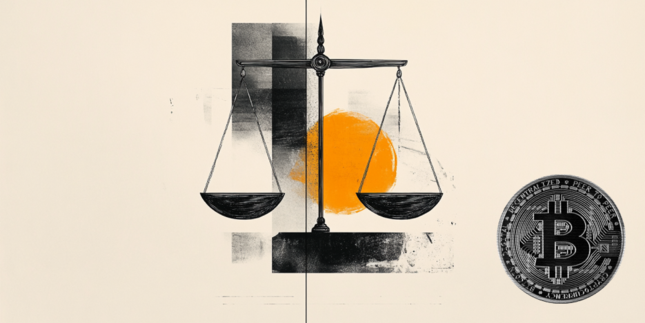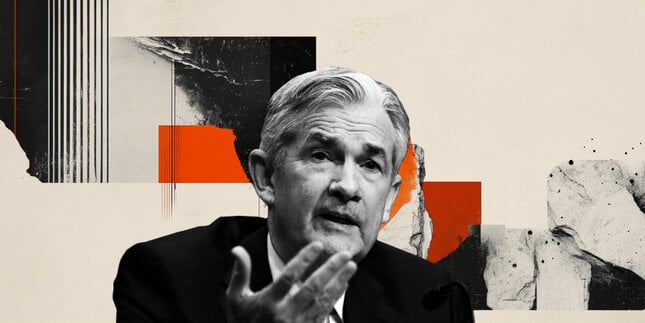- EUR/USD prints a fresh three-week high above 1.0900 as Fed rate-cut bets for September surge.
- Cooling US inflationary pressures have boosted Fed rate-cut bets.
- Investors await Fed Powell’s speech and ECB policy meeting.
The EUR/USD pair refreshes a three-week high slightly above the round-level figure of 1.0900 in Monday’s European session. Sheer strength in the major currency pair is driven by strong possibility of the Federal Reserve (Fed) to begin reducing interest rates from the September meeting and improved appeal of the Euro ahead of the European Central Bank (ECB) policy meeting, which is scheduled for Thursday.
Market sentiment remains risk-on as the Fed is widely anticipated to cut interest rates in September. S&P 500 futures have posted significant gains in European trading hours. The US Dollar Index (DXY), which tracks the Greenback’s value against six major currencies, remains on the backfoot near 104.00.
The Fed rate-cut expectations have been fuelled by easing price pressures and cooling labor market conditions. The United States (US) Consumer Price Index (CPI) report for June showed that the disinflation process has resumed as inflationary pressures grew slower-than-expected for the second straight time.
Meanwhile, investors await Fed Chair Jerome Powell’s speech, which is scheduled for 16:30 GMT. The comments from Fed Powell will indicate when the central bank will start reducing interest rates.
On the other side of the Atlantic, the Euro will dance to the tunes of ECB monetary policy meeting. The ECB is widely anticipated to leave its key rates unchanged. Therefore, investors will majorly focus on the cues about when the ECB will take its second rate-cut decision. On June 6, the ECB lowered its interest rates for the first time since its policy-tightening cycle was initiated in July 2022.
Euro FAQs
The Euro is the currency for the 20 European Union countries that belong to the Eurozone. It is the second most heavily traded currency in the world behind the US Dollar. In 2022, it accounted for 31% of all foreign exchange transactions, with an average daily turnover of over $2.2 trillion a day. EUR/USD is the most heavily traded currency pair in the world, accounting for an estimated 30% off all transactions, followed by EUR/JPY (4%), EUR/GBP (3%) and EUR/AUD (2%).
The European Central Bank (ECB) in Frankfurt, Germany, is the reserve bank for the Eurozone. The ECB sets interest rates and manages monetary policy. The ECB’s primary mandate is to maintain price stability, which means either controlling inflation or stimulating growth. Its primary tool is the raising or lowering of interest rates. Relatively high interest rates – or the expectation of higher rates – will usually benefit the Euro and vice versa. The ECB Governing Council makes monetary policy decisions at meetings held eight times a year. Decisions are made by heads of the Eurozone national banks and six permanent members, including the President of the ECB, Christine Lagarde.
Eurozone inflation data, measured by the Harmonized Index of Consumer Prices (HICP), is an important econometric for the Euro. If inflation rises more than expected, especially if above the ECB’s 2% target, it obliges the ECB to raise interest rates to bring it back under control. Relatively high interest rates compared to its counterparts will usually benefit the Euro, as it makes the region more attractive as a place for global investors to park their money.
Data releases gauge the health of the economy and can impact on the Euro. Indicators such as GDP, Manufacturing and Services PMIs, employment, and consumer sentiment surveys can all influence the direction of the single currency. A strong economy is good for the Euro. Not only does it attract more foreign investment but it may encourage the ECB to put up interest rates, which will directly strengthen the Euro. Otherwise, if economic data is weak, the Euro is likely to fall. Economic data for the four largest economies in the euro area (Germany, France, Italy and Spain) are especially significant, as they account for 75% of the Eurozone’s economy.
Another significant data release for the Euro is the Trade Balance. This indicator measures the difference between what a country earns from its exports and what it spends on imports over a given period. If a country produces highly sought after exports then its currency will gain in value purely from the extra demand created from foreign buyers seeking to purchase these goods. Therefore, a positive net Trade Balance strengthens a currency and vice versa for a negative balance.
Information on these pages contains forward-looking statements that involve risks and uncertainties. Markets and instruments profiled on this page are for informational purposes only and should not in any way come across as a recommendation to buy or sell in these assets. You should do your own thorough research before making any investment decisions. FXStreet does not in any way guarantee that this information is free from mistakes, errors, or material misstatements. It also does not guarantee that this information is of a timely nature. Investing in Open Markets involves a great deal of risk, including the loss of all or a portion of your investment, as well as emotional distress. All risks, losses and costs associated with investing, including total loss of principal, are your responsibility. The views and opinions expressed in this article are those of the authors and do not necessarily reflect the official policy or position of FXStreet nor its advertisers. The author will not be held responsible for information that is found at the end of links posted on this page.
If not otherwise explicitly mentioned in the body of the article, at the time of writing, the author has no position in any stock mentioned in this article and no business relationship with any company mentioned. The author has not received compensation for writing this article, other than from FXStreet.
FXStreet and the author do not provide personalized recommendations. The author makes no representations as to the accuracy, completeness, or suitability of this information. FXStreet and the author will not be liable for any errors, omissions or any losses, injuries or damages arising from this information and its display or use. Errors and omissions excepted.
The author and FXStreet are not registered investment advisors and nothing in this article is intended to be investment advice.
Recommended content
Editors’ Picks

NZD/USD holds the rebound near 0.5550 after RBNZ's expected 25 bps rate cut
NZD/USD holds the rebound near 0.5550 after the RBNZ delivered the expected 25 bps interest rate cut to 3.5%. The pair reached a five-year lows earlier this Wednesday amid the global meltdown on the back of tariffs-led recession fears and escalating US-China trade war.

AUD/USD recovers further to 0.6000 despite escalating US-China trade war
AUD/USD is building on its recovery from its lowest level since March 2020, retesting 0.6000 in Wednesday's Asian trading. The pair's upside appears elusive as officials confirmed that the US will proceed with a sweeping 104% tariff on Chinese imports starting this Wednesday.

Gold price extends its consolidative price move near multi-week low
Gold price remains confined in a range near a multi-week low touched on Monday amid mixed fundamental cues. The widening global trade war and recession fears lead to an extended sell-off in equity markets worldwide. Moreover, bets for more aggressive Fed rate cuts and a weaker USD act as a tailwind for the bullion.

Trump's tariffs could be beneficial for Bitcoin: Here's why
Bitcoin dropped below $76,000 on Tuesday as the crypto market extended its decline after President Donald Trump imposed an extra 50% tariff on China. Despite the immediate price dip, several crypto experts suggest that Bitcoin could see tremendous growth if the US Dollar continues to plunge.

The Fed is looking at a hefty price level
We are still in thrall to tariffs, the faux-macro “data” driving markets. The WSJ editorial board advised other countries to take their tariffs to zero so that Trump’s “reciprocal” tariffs will have to be zero, too. Cute, but no cigar.

The Best brokers to trade EUR/USD
SPONSORED Discover the top brokers for trading EUR/USD in 2025. Our list features brokers with competitive spreads, fast execution, and powerful platforms. Whether you're a beginner or an expert, find the right partner to navigate the dynamic Forex market.



